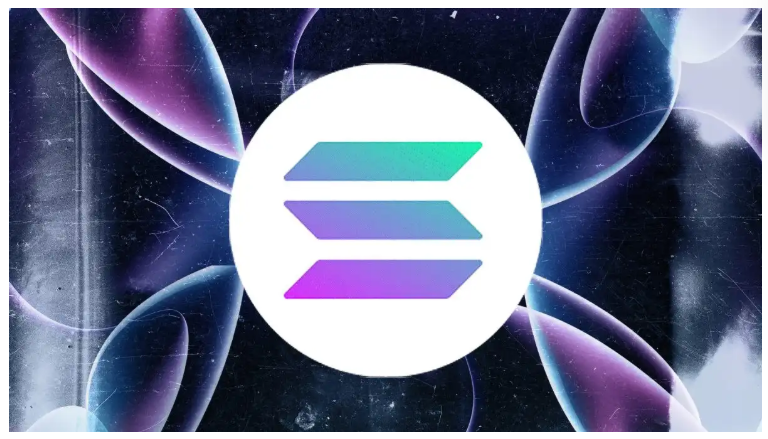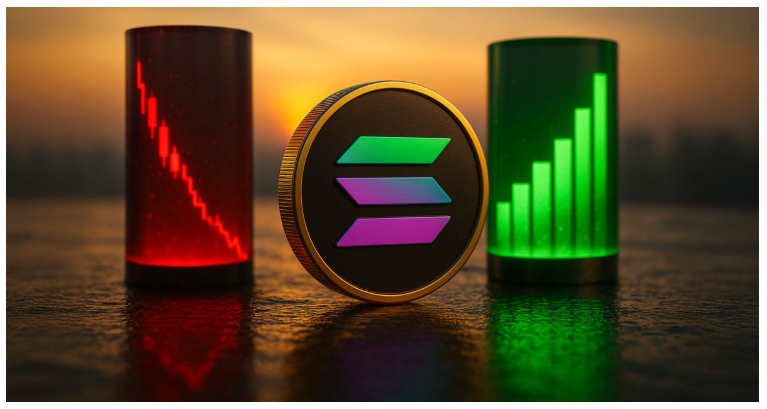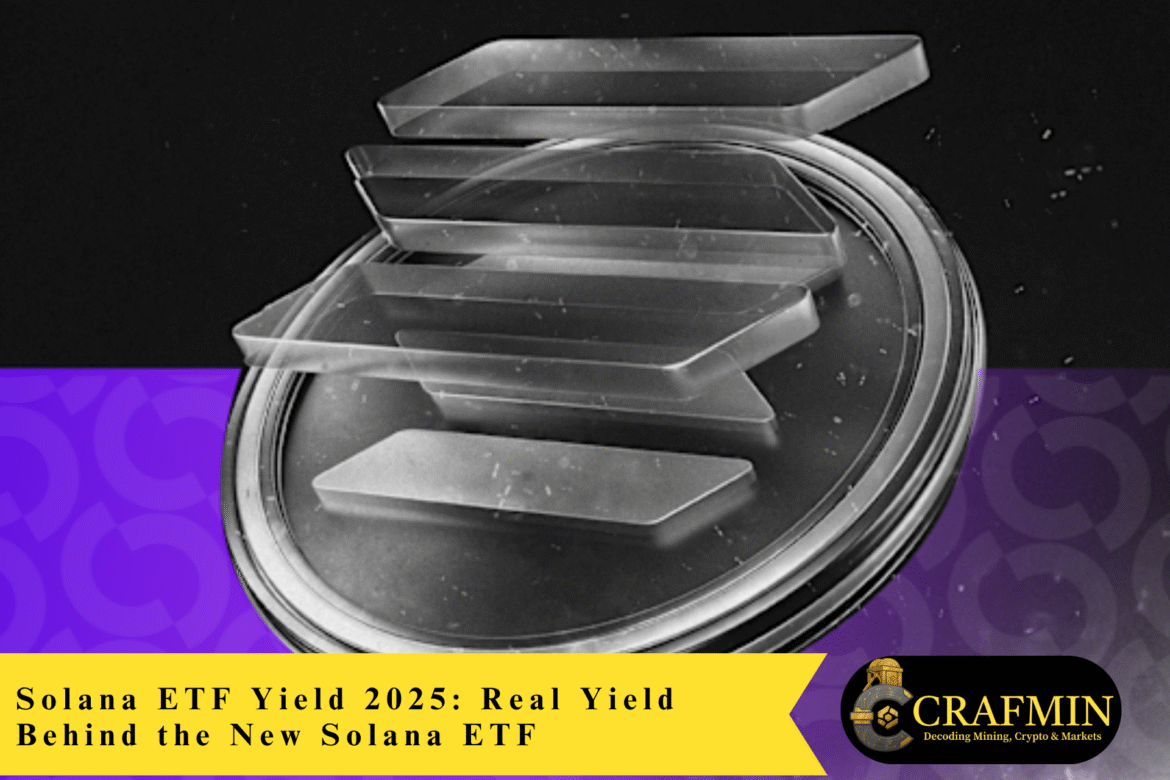The freshly launched Solana staking ETF explained a new phase of interaction between stocks and crypto for investors seeking diversified yield options. The BSOL ETF gave the market a glimpse of its capability by surpassing the US$72.4 million mark of trading on its second day after initially coming to the market with US$56 million in transactions. Thus, the performance of the new Solana ETF Yield 2025 has made its launch the most fruitful among the 850 new funds launched this year, with a very small number of new funds attracting investors. Besides, it has opened a new path for investors to access staking rewards on the Solana network through a regulated, transparent framework, offering a strong foundation for those following a clear, concise Solana ETF investment guide.
Staking is a process of freezing Solana (SOL) tokens on a proof-of-stake network, which helps in validating the transactions and consequently maintaining the integrity of the blockchain. The participants of this process, through the network’s design, reap rewards that are directly from the network instead of through speculation or leverage. Thus, the investors’ earnings are “real yield” income that is basically linked to the blockchain activity and not synthetic returns. The Solana staking ETF explained model makes this concept more accessible to traditional investors who wish to earn staking rewards in a transparent, regulated format without having to deal with complex wallet operations.

Solana staking ETF shows record-breaking yield and investor confidence surge.
Why Does the Solana ETF Yield 2025 Matter?
The hottest debate in town seems to be Solana ETF Yield 2025, with the new point of merging decentralised finance with the traditional capital markets. The ETF makes it so much easier for investors who would rather get regulated and exchange-listed exposure than handle staking directly to get staking rewards. The BSOL ETF is targeting a net yield of around 3.1% after the deduction of fees. Although it is less than the 6.7% that direct validators can receive, it still gives investors a chance to choose simplicity, compliance, and institutional-grade custody. For investors following the Solana ETF investment guide clear framework, this balance between yield and compliance is crucial.
Furthermore, the new Solana ETF helps in providing transparency in the crypto earning process. Staking, on the other hand, is a very straightforward mechanism of obtaining rewards, and the entire process heavily relies on validator performance and network activity while generating the earnings, which is not the case with many high-yielding crypto products that depend on lending or leverage. For investors, this transparency and the close association of yield with blockchain efficiency might mark the beginning of a new era of sustainable crypto income. The Solana staking ETF explained proposition emphasises this transparency as one of its main value points for 2025 and beyond.
How Does The Investment Structure Work?
The Solana ETF Yield 2025 is designed as a fund that holds SOL tokens, which are staked through licensed custodians and professional validators. These validators process transactions and secure the network, earning staking rewards that are then shared with ETF investors after management and operational fees are deducted. The ETF takes the rewards daily and applies an internal mechanism for maintaining liquidity even during Solana’s on-chain lock-up periods, a point highlighted in the Solana ETF investment guide clear documentation for investors.
On the other hand, investors must be aware of the risks involved. Assets that are staked can suffer a slashing of their value in case validators are found to be acting dishonestly or not doing their job. The volatile price of SOL also impacts total returns. Although the ETF does stake on behalf of investors, the market and network factors that affect yield remain the same. This structure, as the Solana staking ETF explained approach shows, enables both accessibility and professional management under regulated conditions.

Solana ETF Yield 2025 offers regulated staking rewards via custodians.
What Are the Key Risks And Considerations?
All the yields from staking are based on real network activity but are not fixed long-term. They are dynamic depending on validator performance and the volume of network transactions. The price of SOL can change apart from the staking rewards and, therefore, put investors at risk of a down market. Additionally, investors should consider liquidity limits and possible slashing risks during validator interruptions and outages. Understanding these details is a key part of the Solana ETF investment guide’s clear strategy.
Another aspect is regulatory uncertainty. Staking-based ETFs are quite new in the market, and taxation and compliance frameworks could change, which would affect the overall return on investment. In this light, investors need to weigh their risk tolerance and investment horizon before investing in such digital asset funds. The Solana staking ETF explained materials emphasise that while these funds are regulated, underlying blockchain volatility still applies.
Why Is This a Potentially Significant Moment?
The Solana ETF Yield 2025 arrival could be considered a watershed moment in the staking financial products development, becoming mainstream. It connects the dots of decentralised participation with regulated investing, offering both transparency and accessibility. While proof-of-stake networks are on the rise and the demand for blockchain-backed yield is increasing, more ETFs like this one may emerge in other prominent networks soon, reinforcing what the Solana staking ETF explained: initiatives have started.
This ETF opens a door for financial institutions to add non-traditional fixed-income assets to their portfolios. It brings the opportunity to earn yield through real blockchain participation with no technical management required on the user’s part, an essential consideration highlighted in every Solana ETF investment guide clear outline for institutional and retail investors alike.

Solana ETF Yield 2025 marks the mainstream fusion of staking and investing.
How Should Investors Approach a Solana ETF Investment Guide?
The first step to a good investment in the Solana ETF Yield 2025 is to learn how staking works. Staking should be seen as a hybrid product, a crypto asset plus a yield-producing instrument. Judging validator trustworthiness, fee systems, network expansion, and SOL market fundamentals are indispensable actions. Following the principles of the Solana staking ETF explained process helps ensure investors understand the underlying mechanism before investing.
One must weigh different kinds of risks against potential rewards very carefully. The net yield objective of 3.1% sets a very stable income outlook, but it should be part of a portfolio, not the whole. The Solana ETF investment guide provides clear documentation advising diversification across assets. The Solana Staking ETF is a product that one can access in a structured and transparent way for those looking for diversified digital exposure through the Solana ETF Yield 2025 opportunity.
Also Read: Solana DeFi Resurgence: One Million SOL Traded in a Day
FAQs
Q1: What will be the yield of the Solana Staking ETF?
The ETF is aiming for a net staking yield of about 3.1% after management fees, as indicated in the Solana ETF Yield 2025 performance estimates.
Q2: How does this compare with direct Solana staking?
Direct staking could yield nearly 6.7%, but ETFs lower the yield to allow more accessibility and provide greater regulatory protections, a balance well outlined in the Solana staking ETF explained documents.
Q3: What are the primary risks of the Solana ETF?
The risks include SOL price fluctuations, validator failures, slashing penalties, and restrictions on liquidity, all covered under the Solana ETF investment guide’s clear framework.
Q4: Is the Solana Staking ETF a good option for retail investors?
Definitely. It enables investors to get staking exposure without needing technical skills. Besides that, it also provides regulated access and transparent yield, an idea central to the Solana staking ET, F explains, and the Solana ETF Yield 2025 approach.

